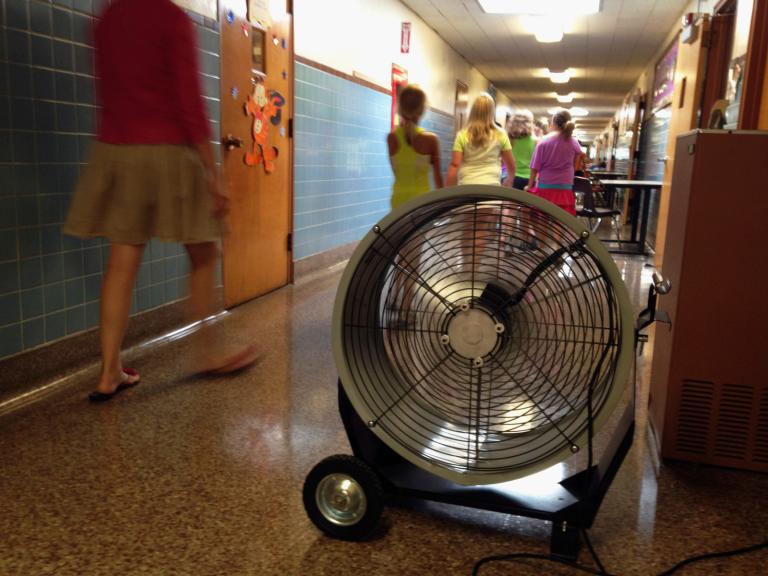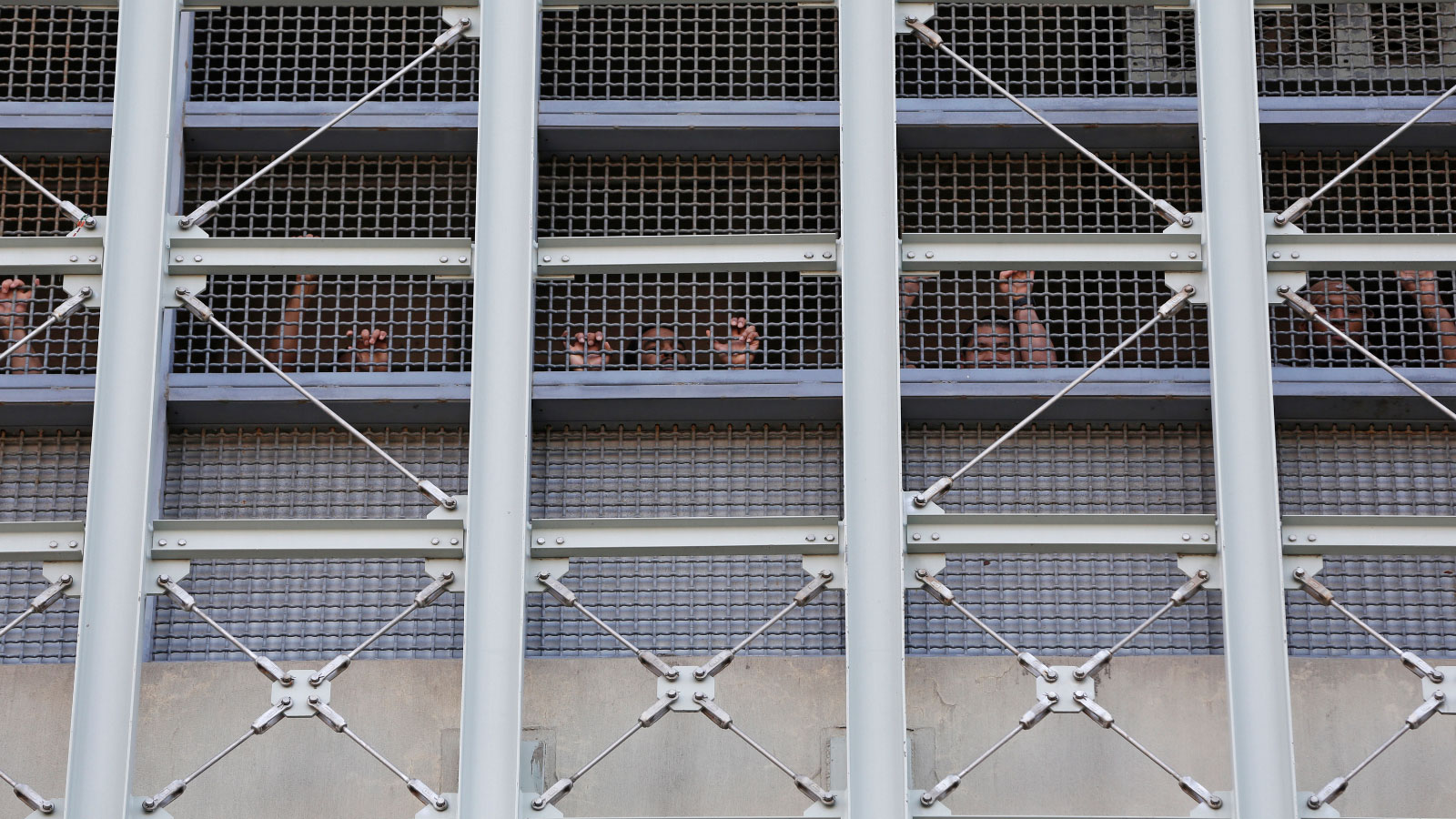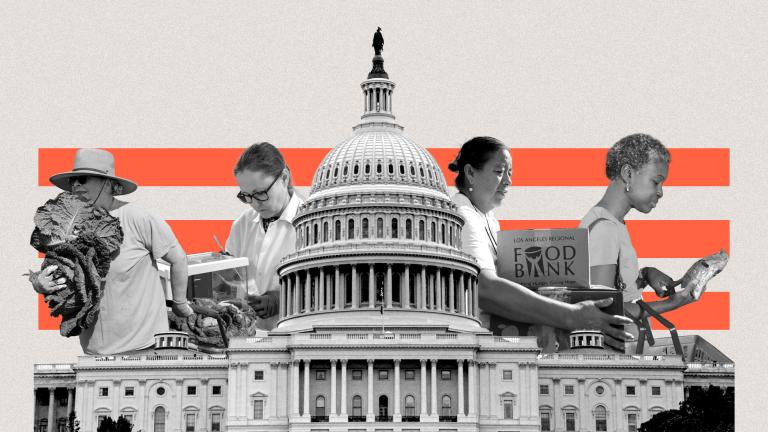“We are basically sitting in an oven, slow-cooking,” said Demetrius Cotchery, who is incarcerated in Alabama’s Childersburg Community Work Center, a prison that lacks air conditioning despite outdoor temperatures that hover above 90 degrees Fahrenheit in summer. “People are very, very agitated because of the heat.”
As record-breaking heat waves make headlines across the country this summer, well over 100,000 people in the U.S. South sit locked inside state prisons with no air conditioning. At the Buckingham Correctional Facility outside of Richmond, Virginia, even the unairconditioned facility’s ventilation system was broken much of the summer, according to Chad Miller, who is incarcerated there and works with the building and grounds crew. (When contacted by Grist, Virginia’s corrections department disputed this claim.) Miller recently witnessed another prisoner fainting from heat stress.
In Texas, where temperatures inside state prisons regularly hit 110 degrees F, some prisoners work seven days a week to implement the state’s heat mitigation policies, by, for example, distributing water and ice. Marcus Teamer, who is incarcerated at the Byrd Unit in Huntsville, has been scolded when other prisoners pass out from the heat, for failing to hand out water fast enough. One day, he began to feel dizzy himself and developed chest pain while working. His fiancé, Tonya Grimes, worries that heat sensitivity exacerbated by his blood pressure medicine makes him especially vulnerable.
“The main topic of conversation on a hot day is why we don’t have AC,” Teamer told Grist.
Texas lawmakers have repeatedly failed to pass legislation funding universal air conditioning in state prisons, even as climate change exacerbates stifling conditions. However, people incarcerated in other parts of the U.S. may soon see some relief from extreme heat. A handful of southern states that once seemed unlikely to budge on prison cooling — including North Carolina, Mississippi, and Louisiana — are now taking steps to invest in climate control. All three states include areas where the heat index will spike to 125 degrees F at least one day annually by 2053, according to recent data from the First Street Foundation, a nonprofit research group.
Some prisoner advocates, however, argue that the solution to increasingly hot prison conditions is to incarcerate fewer people through policies like sentencing reforms, rather than pouring more money into mass incarceration — particularly given the disproportionate incarceration of people of color. The fact that tens of millions of dollars’ worth of investment in air-conditioned incarceration is coming from the American Rescue Plan Act, the federal coronavirus relief bill signed by President Biden last year, has further raised eyebrows.

After a Department of Justice investigation last spring documented temperatures as high as 145 degrees F inside a Mississippi prison, the state’s head of corrections announced that his department would install air conditioning in all of Mississippi’s prisons. North Carolina’s legislature approved $30 million for prison air conditioning last fall. All of North Carolina’s air conditioning spending and part of Mississippi’s will come from American Rescue Plan funds. Other states are taking smaller steps: The secretary of Louisiana’s corrections department, Jimmy LeBlanc — who fought a lawsuit filed by death row prisoners arguing for cooling and used to claim that maintaining air conditioners would be too expensive — recently began pressing for funding to air condition the state’s prisons.
The secretary has cited corrections officer staffing shortages — a nationwide phenomenon — as a reason for the request. “You got correctional officers changing clothes three times per day,” he said. LeBlanc has directed around $2 million appropriated in the last legislative session to hire engineers to determine the cost of installation, and he has also dipped into the department’s repairs budget to begin installing cooling in dorms for people ages 60 to 90.
Virginia and Texas prison officials point out that they, too, are adding more air conditioning every year. Virginia’s Department of Corrections recently added 100 air-conditioned beds to a section of the Haynesville Correctional Center, and it has set aside more than $32 million for air conditioning upgrades in 2023, according to Director of Communications Benjamin Jarvela. (As for allegations about the broken ventilation system at the Buckingham Correctional Facility, he told Grist, “With the exception of one fan, all are in working order and have been. We are currently sourcing parts for the single disabled and will have it back online as soon as those parts have been located.”)
The Texas Department of Criminal Justice expects to add about 6,000 air-conditioned beds by the end of 2023, according to recent testimony that executive director Bryan Collier gave to members of the Texas House of Representatives. Although the agency has already created a plan to fully air-condition all facilities, it estimates the installation would cost $1.1 billion, a total that some advocates say is inflated and that has not been granted by Texas’s Republican-controlled legislature. Last year, prisoner advocates fought for American Rescue Plan funds to be allocated for prison air conditioning, but the measure failed without support from the legislature or Republican Governor Greg Abbott.
Everywhere, change is coming too slowly for those suffering in the heat. In Virginia and Texas, large swaths of the incarcerated populations — around 5,700 out of 25,000 in Virginia and 79,000 out of 120,000 in Texas — remain vulnerable to extreme heat. In Louisiana, the installation process is expected to take years to complete, even if funding is approved. In North Carolina, where 15,400 incarcerated people lack air conditioning, the state has already come under fire for failing to begin renovations months after funding was made available. Meanwhile, in northern states, where prisoners are less acclimated to increasingly severe heat waves, the air conditioning debate is just getting off the ground.
The moves toward prison air conditioning can be credited partly to summers that are becoming increasingly brutal due to climate change. An investigation by The Intercept found that a third of U.S. prisons are located in counties that have historically seen more than 50 days annually with a heat index over 90 degrees F. By the end of the century, that proportion will balloon to a full three quarters.
Rising prison temperatures don’t just threaten prisoners — they also endanger thousands of corrections employees in southern states. Lawmakers and state officials, including in Mississippi and Louisiana, have repeatedly pointed out a need to retain staff as justification for new prison air conditioning. Across the U.S., prison employees have quit in droves since 2020, forcing corrections departments to take drastic actions to manage increasingly dangerous and restrictive conditions for prisoners. Some corrections union officials have cited extreme heat, alongside poor pay and benefits, as a reason behind the prison staffing shortage.
Grimes herself used to work soaked in sweat in an unairconditioned prison kitchen, and she quit in part due to the stifling conditions and their impact on prisoners like her fiancé. “I refused to be a part of it,” she told Grist.
A hot prison climate also means legal liability for states. Texas and Louisiana have both spent more than $1 million fighting heat-related lawsuits from incarcerated people and their families. Mississippi’s legal pressure comes directly from the federal government. In the wake of massive cuts to corrections department funding over the past decade, Mississippi facilities saw an increase in violent deaths, gangs taking control of prisons, and staff vacancy rates reaching around 50 percent — all culminating in a deadly, weekslong riot in January 2020. The following month, the U.S. Department of Justice’s Civil Rights Division launched an investigation into the Mississippi State Penitentiary at Parchman and three other state prisons.
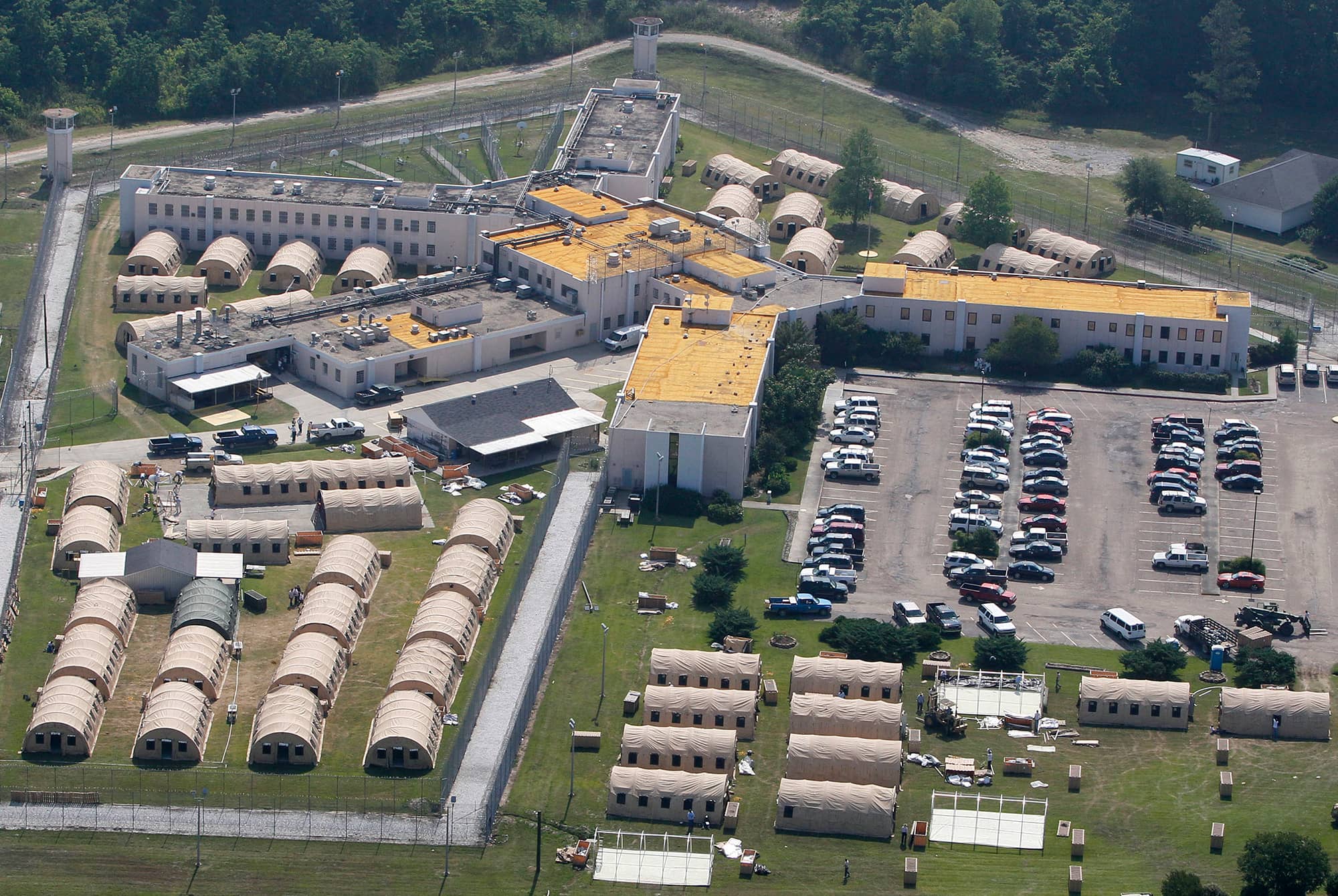
The department’s report on Parchman, released last April, identified extreme heat as one of the factors behind unconstitutionally dangerous conditions. Investigators reviewed temperature logs for the penitentiary’s largest housing unit, which can hold up to 1,500 people, and found heat reaching above 100 degrees F on two-thirds of the recorded dates. (Investigators did not say what time period they reviewed, and the Department of Justice declined Grist’s requests for comment.) “The highest temperature in that unit was recorded at the dangerously hot 145.1 degrees,” the report stated.
Faulty infrastructure and neglect from prison staff was at times more to blame than the weather outside, the report indicated. One harrowing passage described the February 2021 suicide of a man who had spent years in restrictive housing, which is made up of isolated cells housing one or two people. In the week leading up to his death, he had begged corrections officers to turn down the heat. Records showed that temperatures hovered well above 120 degrees that week, despite the mild weather outside.
The report concluded that extreme heat in restrictive housing contributed to “harsh environmental conditions” constituting cruel and unusual punishment — a violation of the Constitution’s Eighth Amendment. The Justice Department warned that if its concerns weren’t rapidly addressed, the federal government would sue Mississippi. The state appears to have acted on that threat: In response to inquiries from Grist, a corrections department official said that, thanks to work completed this year, 70 percent of Parchman’s population is now air-conditioned.
The Mississippi Department of Corrections appears to see using American Rescue Plan Act funds to pay for air conditioning as a way to avoid further federal scrutiny. “We’ll dodge maybe the Justice Department and save the state of Mississippi a whole lot of money,” Department of Corrections Commissioner Burl Cain told the local NBC affiliate WLBT. According to the department official who answered Grist’s inquiries, $4 million of those federal funds will go to HVAC projects at Parchman alone.
Prisoner advocates say the federal government could do more to push states to ensure that prisoners are not suffering in extreme heat. “We support more federal investigations of prison facilities. A lot of prisons are in terrible shape and the federal government carries a big hammer,” said Molly Gill, vice president for policy of Families Against Mandatory Minimums, a nonprofit that pushes for shorter sentences and better prison conditions.
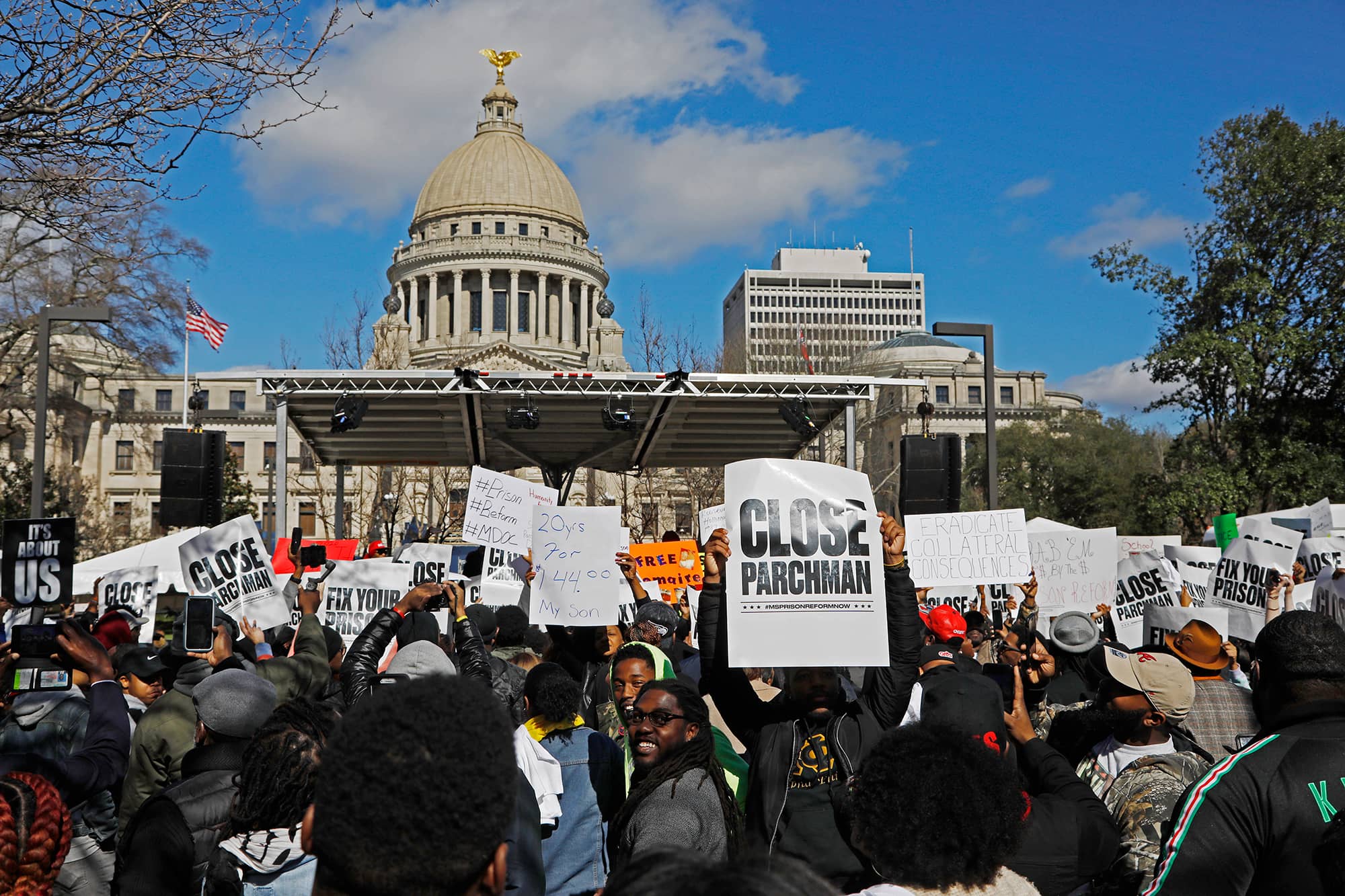
Gill added that more federal funding for prison air conditioning can make it easier for states to get approval for politically unpopular prison investments. “Some lawmakers see it as a thankless task to improve prison conditions,” she said. In June, for example, Florida Governor Ron DeSantis vetoed $840 million in funding for a new climate-friendly prison and prison hospital, which would have been air conditioned and built to withstand hurricanes.
To Sandra Hardee, director of North Carolina Citizens United for Restorative Effectiveness, which advocates for people who are incarcerated, air conditioning investments can’t come soon enough. “Funding for AC should have been done years and years ago,” she said. “To know that so many people were forced to live in those stagnant conditions in prison for so long — that’s dehumanizing.”
However, others have raised concerns that funding prison air conditioning means pouring new money into a mass incarceration system that locks away more people per capita than any other nation in the world. Particular criticism has been reserved for Alabama, which recently approved construction of two new 4,000-bed, air-conditioned prisons, using $400 million in American Rescue Plan funds.
As in Mississippi, Alabama’s road to new investment started with a 2019 Justice Department investigation that described uncontrolled violence, severe understaffing, and overcrowded, crumbling prisons. Alleging that Alabama didn’t act fast enough to address the problems, the Justice Department sued.
In response, the state promised to open new prisons that would have been privately financed and operated. Although the Justice Department investigation did not mention extreme heat, air conditioning was part of the plan and intended to address issues cited by the department: Reporters at the Montgomery Advertiser found that more assaults at state prisons occur in the dog days of July than any other time of year.
A coalition of grassroots organizers and national organizations called Communities not Prisons fought back, helping convince the banks behind the projects to pull out. The plans seemed dead before the influx of American Rescue Plan funds revived them.
The projects are now facing two funding-related lawsuits, arguing that the funding would violate American Rescue Plan rules and that the state didn’t conduct sufficient community consultation or review of the environmental impacts of the project. U.S. Treasury Department rules governing American Rescue Plan funds suggest that the “construction of new correctional facilities as a response to an increase in rate of crime” is ineligible. Nevertheless, 20 counties in 18 states plan to use the federal money to build or expand prisons, according to reporting by The Nation.
“Using federal dollars earmarked for COVID relief funds to finance part of a prison construction plan should have been unconscionable to Alabama lawmakers,” wrote Lauren-Brooke Eisen, director of the Brennan Center’s Justice Program in an op-ed for The Hill. “The state should instead invest resources in diverting people away from the criminal legal system and supporting drug treatment, mental health programming, and re-entry service.”
The Treasury’s rules do appear to support states using funds for air conditioning, repeatedly mentioning improvement of ventilation in congregate settings as an acceptable way to use the money.
To Cotchery, incarcerated at Alabama’s Childersburg Community Work Center, what’s most desperately needed is a pathway for people locked in the state’s hot prisons to walk out the door and live a good life with their loved ones. “Instead of $400 million in buildings, I would spend $20 million on programs,” he said. “When people leave an Alabama prison they’re not better people. You put them in a cage and poked them the whole time.”
In Texas, Teamer laughed when asked if it would be better to reduce sentences than to invest in air conditioning. “I’m all for letting people out. I’ve been locked up 21 years, since I was 15 years old,” he said. “But I’m in Texas, and I know that’s not gonna happen.”
